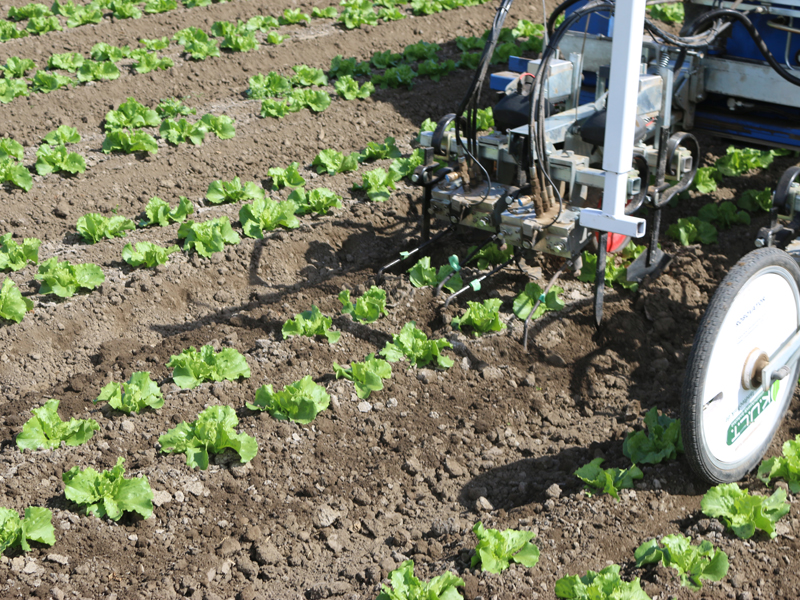Robotic weeders: to a farm near you?
January 10, 2018 - Kaine Korzekwa
The future of weeding is here, and it comes in the form of a robot.
 The growing popularity of robotic weeders for specialty crops has grown partly out of necessity, says Steven Fennimore, an extension specialist at the University of California, Davis. Specialty crops are vegetables like lettuce, broccoli, tomatoes, and onions. They are not mass-produced like corn, soybeans, and wheat.
The growing popularity of robotic weeders for specialty crops has grown partly out of necessity, says Steven Fennimore, an extension specialist at the University of California, Davis. Specialty crops are vegetables like lettuce, broccoli, tomatoes, and onions. They are not mass-produced like corn, soybeans, and wheat.
The need for robotic weeders stems from two issues. One is a lack of herbicides available for use in specialty crops. Another is the fact that hand-weeding has become more and more expensive. Without pesticides, growers have had to hire people to hand-weed vast fields.
Hand-weeding is slow and increasingly expensive: it can cost $150-$300 per acre. That motivates some growers to look to robotic weeders.
“I’ve been working with robotic weeders for about 10 years now, and the technology is really just starting to come into commercial use,” Fennimore says. “It’s really an economic incentive to consider them.”
Fennimore works with university scientists and companies to engineer and test the weeders. The weeders utilize tiny blades that pop in and out to uproot weeds without damaging crops. He says that although the technology isn’t perfect, it’s getting better and better.
The weeders are programmed to recognize a pattern and can tell the difference between a plant and the soil. However, they currently have trouble telling the difference between a weed and a crop.
That said, Fennimore explains how some companies are training the machines to tell a lettuce plant from a weed. He’s also working with university engineers on a system to tag the crop plant so the weeders will avoid it.
“The problem with the machines right now is that they are version 1.0, and there’s tremendous room for improvement,” he says. “The inability to be able to tell the difference between a weed and a crop requires the grower to be very exact when using them. The rows have to be a little straighter, cleaner, and more consistent because the machines aren’t that sophisticated yet. The robots don’t like surprises.”
The robotic weeders currently on the market cost between $120,000 and $175,000. For some California growers, it is a better long-term option than expensive hand-weeding. Others think it’s a lot of money for a new technology, and are waiting for it to get better and cheaper.
Fennimore believes robotic weeders are the future of weeding in specialty crops. Because of higher labor costs and more incentives to grow organically with fewer pesticides, European growers have been using robotic weeders for some time.
Fennimore is focusing his work on physical control of weeds because it offers the best option. He’s also started working in crops besides lettuce, such as tomatoes and onions. He adds that each crop will require a different system.
“I believe what makes the robotic weeders better than herbicides is that this electronic-based technology is very flexible and can be updated easily,” he says. “We all update our phones and computers constantly, which is a sign of a robust and flexible technology.”
Fennimore presented his research at the October Annual Meeting of the American Society of Agronomy, Crop Science Society of America, and Soil Science Society of America in Tampa, FL.
Read more about weed control in this blog.
